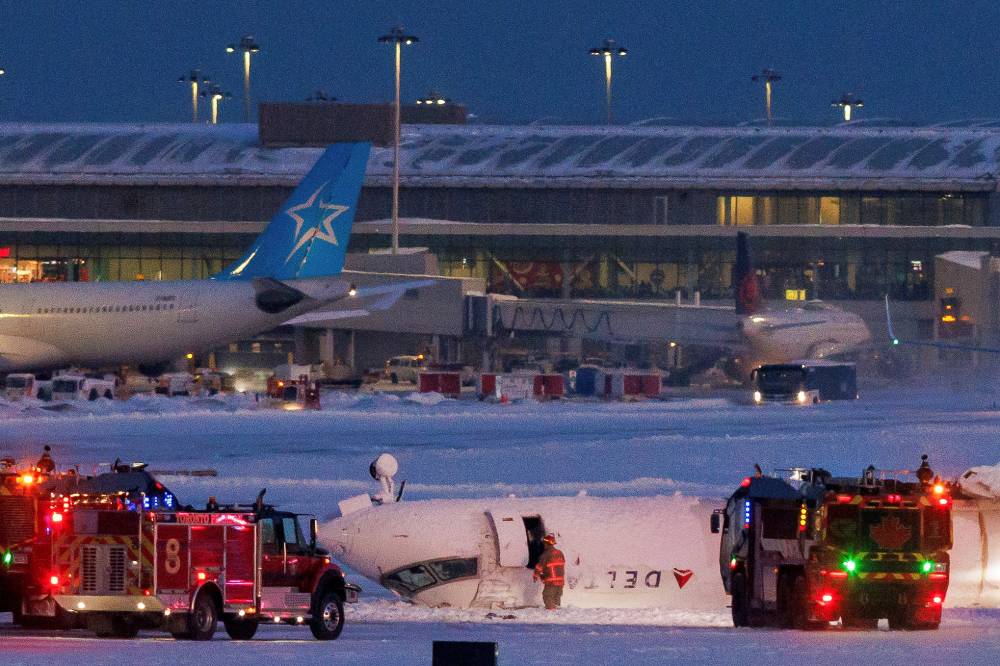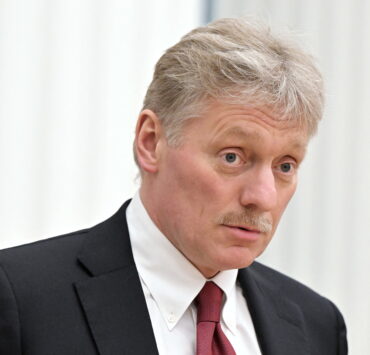Plane flips upside down on landing in Toronto amid wind, snow

TORONTO—A Delta Air Lines jet flipped upside down upon landing at Canada’s Toronto Pearson Airport on Monday amid windy weather following a snowstorm, injuring 18 of the 80 people on board, officials said.
Three people on the flight that originated at Minneapolis-St. Paul International Airport suffered critical injuries, among them a child, a Canadian air ambulance official added.
US carrier Delta said a CRJ900 aircraft operated by its Endeavor Air subsidiary was involved in the accident with 76 passengers and four crew members on board.
The 16-year-old CRJ900, made by Canada’s Bombardier and powered by GE Aerospace engines, can seat up to 90 people.
At least one of the two wings was no longer attached to the plane, video showed after the accident.
Canadian authorities said they would investigate the cause of the crash, which was not yet known.
Passenger John Nelson posted a video of the aftermath on Facebook, showing a fire engine spraying water on the plane that was lying belly-up on the snow-covered tarmac.
Nothing unusual
He later told CNN there was no indication of anything unusual before landing.
“We hit the ground, and we were sideways, and then we were upside down,” Nelson told the television network.
“I was able to just unbuckle and sort of fall and push myself to the ground. And then some people were kind of hanging and needed some help being helped down, and others were able to get down on their own,” he said. Pearson Airport said earlier on Monday it was dealing with high winds and frigid temperatures as airlines attempted to catch up with missed flights after a weekend snowstorm dumped more than 22 cm of snow at the airport.
The Delta plane touched down in Toronto at 2:13 p.m. after an 86-minute flight and came to rest near the intersection of runway 23 and runway 15, FlightRadar24 data showed.
The reported weather conditions at time of the crash indicated a “gusting crosswind and blowing snow,” the flight tracking website said.
Contradictions
Toronto Pearson Fire chief Todd Aitken said late on Monday the runway was dry and there were no crosswind conditions, but several pilots Reuters spoke to who had seen videos of the incident pushed back against this comment.
US aviation safety expert and pilot John Cox said there was an average crosswind of 19 knots from the right as it was landing, but he noted this was an average, and gusts would go up and down.
“It’s gusty so they are constantly going to have to be making adjustments in the air speed, adjustments in the vertical profile and adjustments in the lateral profile,” he said of the pilots, adding that “it’s normal for what professional pilots do.”
Investigators would try to figure out why the right wing separated from the plane, Cox said.
Michael McCormick, associate professor of air traffic management at Embry-Riddle Aeronautical University, said the upside-down position made the Toronto crash fairly unique.
Three previous cases of planes flipping over on landing involved McDonnell-Douglas’s MD-11 model.
In 2009, a FedEx freighter turned over on landing at Tokyo’s Narita airport killing both pilots. In 1999, a China Airlines flight inverted at Hong Kong, killing three of 315 occupants.
Reuters, the news and media division of Thomson Reuters, is the world’s largest multimedia news provider, reaching billions of people worldwide every day. Reuters provides business, financial, national and international news to professionals via desktop terminals, the world's media organizations, industry events and directly to consumers.

















